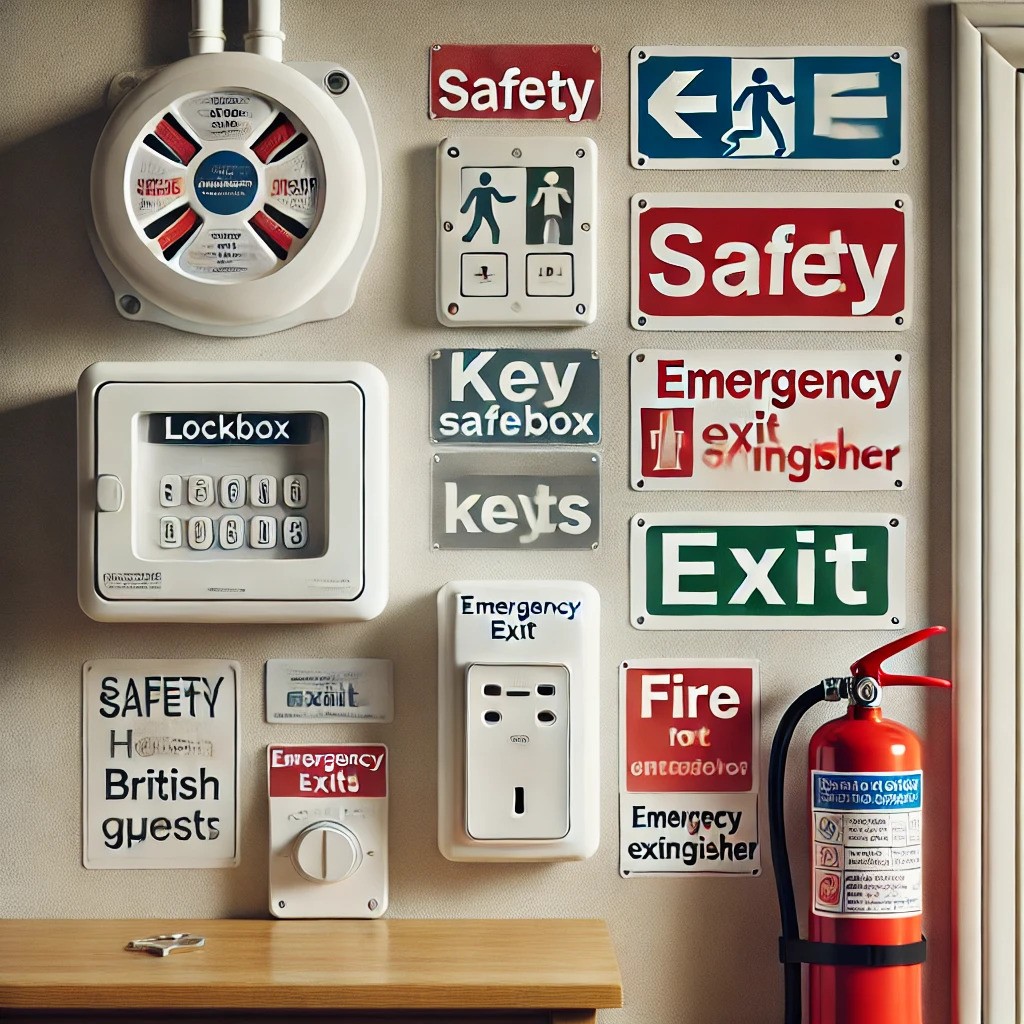
Essential Safety Tips for Hosts and Guests
For both hosts and guests, ensuring safety is crucial when renting out or using temporary spaces. By taking steps to protect personal belongings, reduce risks, and prepare for emergencies, both parties can enjoy a more secure experience. Here are some key safety protocols to consider:
1. Screening and Vetting
- Hosts: Before accepting guests, hosts can screen them by reviewing profiles, past reviews, and engaging in direct communication. Establishing clear expectations and policies upfront is helpful.
- Guests: Guests should also review host profiles, check property reviews, and communicate with hosts to clarify any concerns before booking.
2. Safety Features in the Space
- Essential features like smoke detectors, fire extinguishers, first aid kits, and clear emergency exits should be accessible. Hosts should regularly check and maintain these features to ensure they’re functional.
- Locks and Security: Use reliable lock systems, like lockboxes or digital locks with changing codes, to secure keys and property access.
3. Preparing for Emergencies
- Hosts can prepare emergency instructions covering fire exits, emergency contacts, and the location of safety equipment. Guests should take a few minutes to familiarize themselves with these instructions upon arrival.
4. Communication and Check-Ins
- Establishing a clear communication line between host and guest helps quickly address any issues that arise. Quick response times for questions or concerns can foster a trusting relationship and create a smoother rental experience.
5. Be Mindful of Personal Belongings
- Both parties should be cautious about personal items. Hosts can provide a small locked storage area for valuables, while guests should keep personal items secure when away from the property.
Conclusion
By implementing safety measures, hosts can create a welcoming and secure environment, while guests can confidently enjoy their rental space. Thoughtful preparation and communication between hosts and guests ensure a positive, worry-free experience.
For both hosts and guests, ensuring safety is crucial when renting out or using temporary spaces. By taking steps to protect personal belongings, reduce risks, and prepare for emergencies, both parties can enjoy a more secure experience. Here are some key safety protocols to consider:
1. Screening and Vetting
- Hosts: Before accepting guests, hosts can screen them by reviewing profiles, past reviews, and engaging in direct communication. Establishing clear expectations and policies upfront is helpful.
- Guests: Guests should also review host profiles, check property reviews, and communicate with hosts to clarify any concerns before booking.
2. Safety Features in the Space
- Essential features like smoke detectors, fire extinguishers, first aid kits, and clear emergency exits should be accessible. Hosts should regularly check and maintain these features to ensure they’re functional.
- Locks and Security: Use reliable lock systems, like lockboxes or digital locks with changing codes, to secure keys and property access.
3. Preparing for Emergencies
- Hosts can prepare emergency instructions covering fire exits, emergency contacts, and the location of safety equipment. Guests should take a few minutes to familiarize themselves with these instructions upon arrival.
4. Communication and Check-Ins
- Establishing a clear communication line between host and guest helps quickly address any issues that arise. Quick response times for questions or concerns can foster a trusting relationship and create a smoother rental experience.
5. Be Mindful of Personal Belongings
- Both parties should be cautious about personal items. Hosts can provide a small locked storage area for valuables, while guests should keep personal items secure when away from the property.
Conclusion
By implementing safety measures, hosts can create a welcoming and secure environment, while guests can confidently enjoy their rental space. Thoughtful preparation and communication between hosts and guests ensure a positive, worry-free experience.


